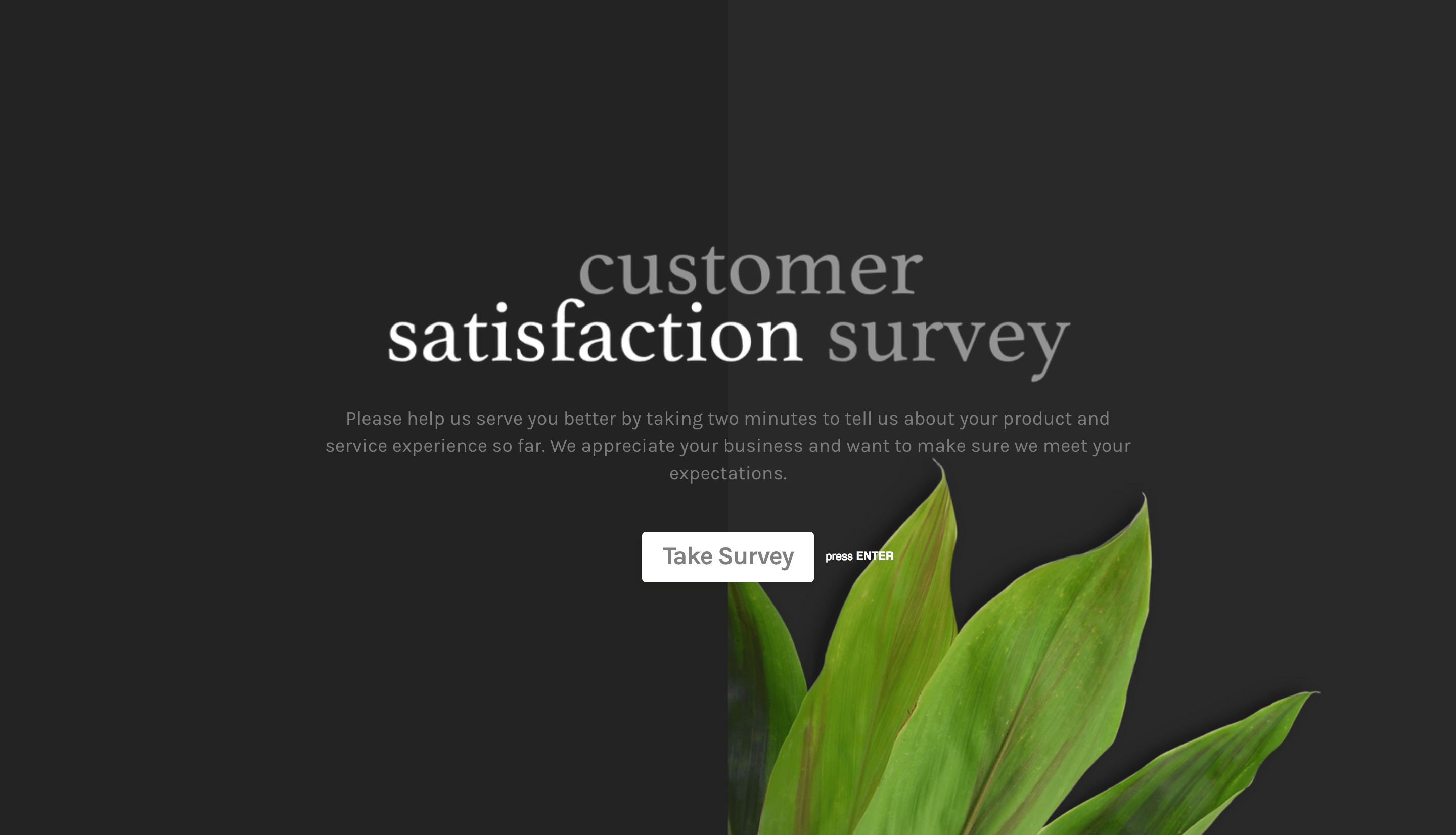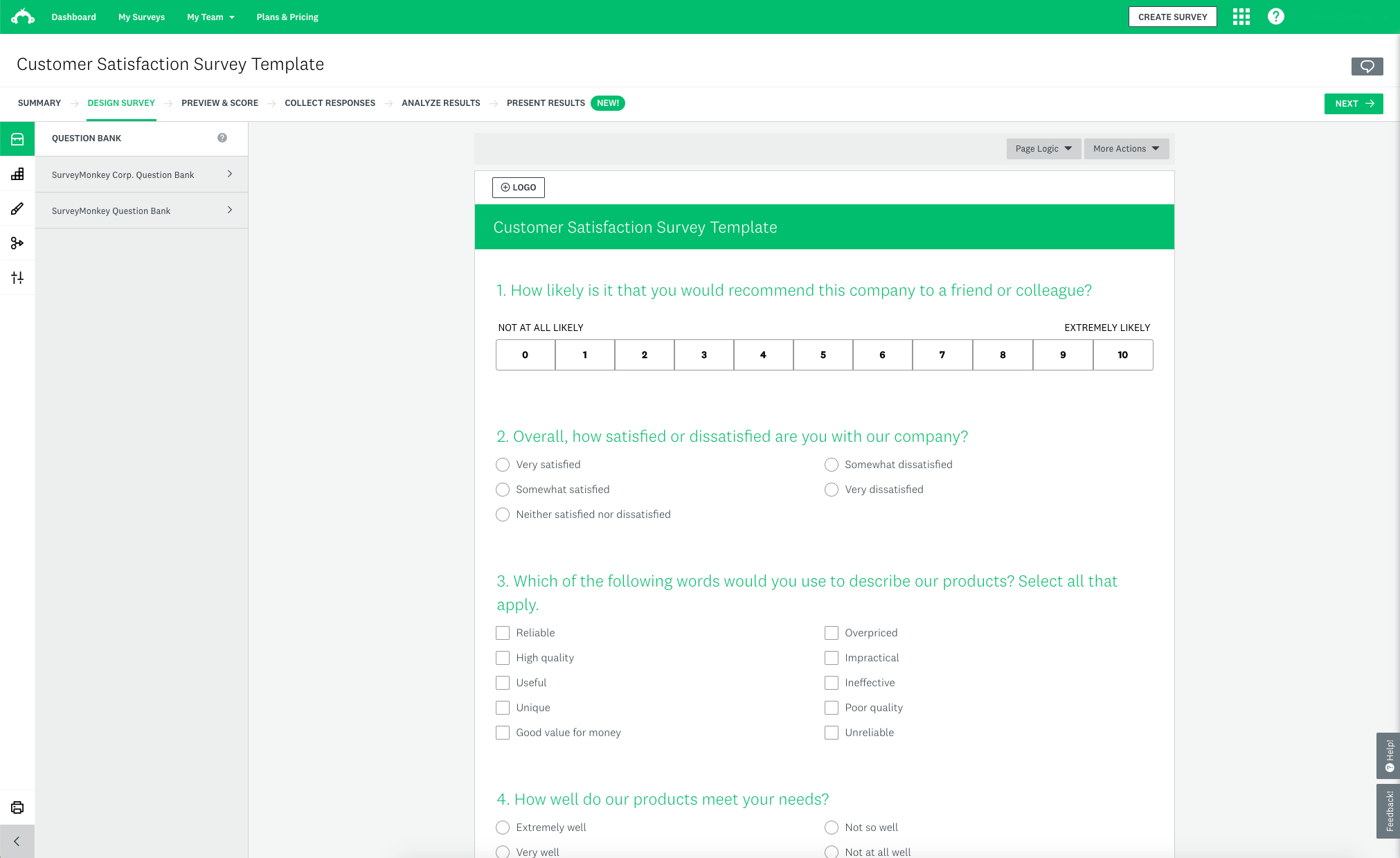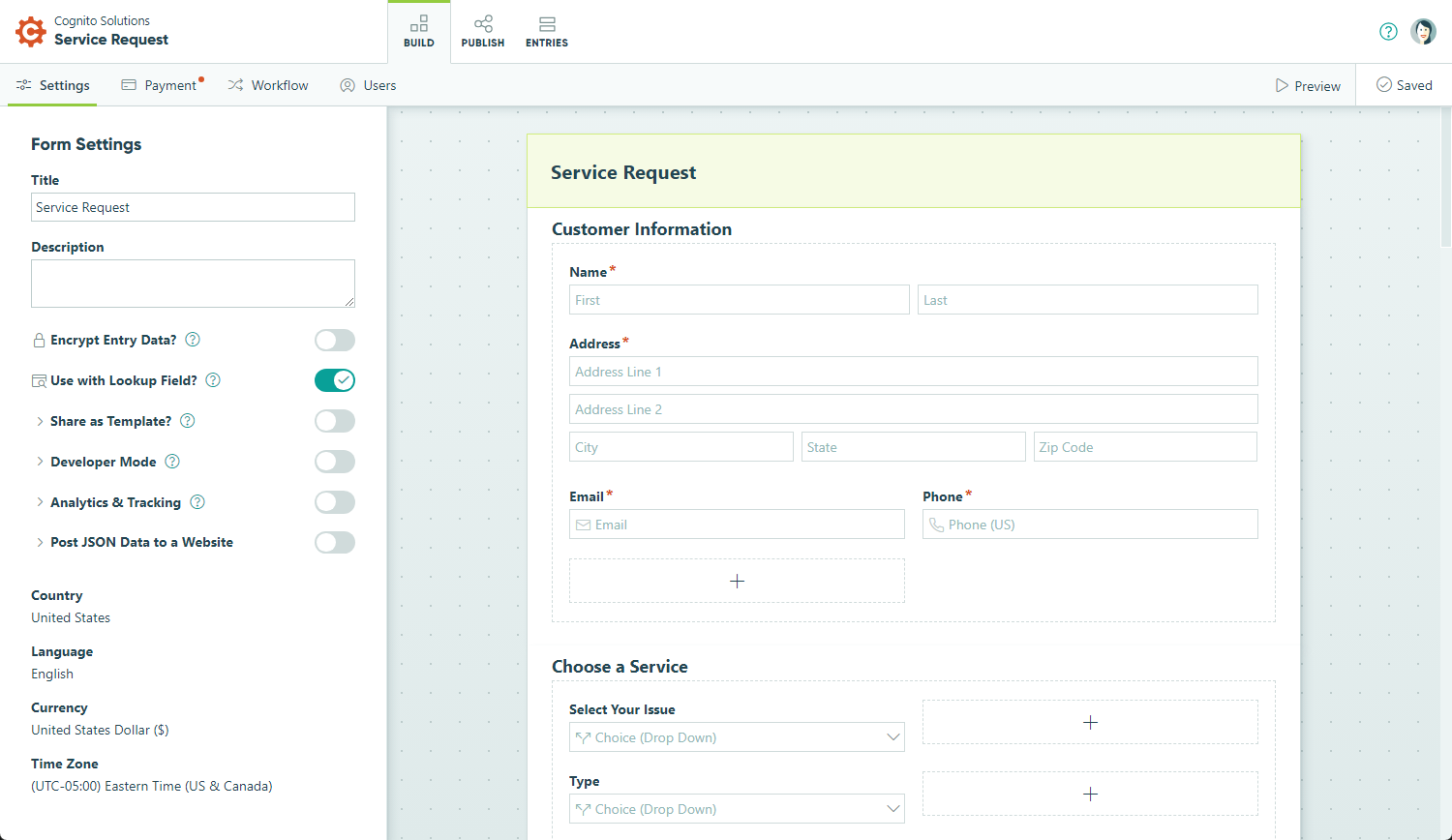Best alternatives to Dynamic Forms
- Formstack: Best for custom workflows
- Jotform: Best for intuitive form-building and extensive integrations
- Google Forms: Best for straightforward form creation with Google Workspace integration
- Wufoo: Best for accessible reporting features
- Typeform: Best for creating conversational forms that engage users
- Microsoft Forms: Best for integration with Microsoft 365 and collaborative form creation
- SurveyMonkey: Best for robust survey functionality and detailed analytics
- Zoho Forms: Best for integrating with Zoho CRM
- Formsite: Best for ease of use
- Cognito Forms: Best for creating complex forms with calculated fields and payment options
Modern organizations run on data, which makes the forms you use to collect and organize it essential. Whether you’re part of a business, nonprofit, or educational institution, you can reduce costs and improve efficiency by choosing the right online form builder. There are many form builders available today, and each serves its own niche and possesses unique advantages.
Dynamic Forms, for instance, is an increasingly popular choice in education. However, it may not be the perfect fit for everyone. There are a range of great alternatives that organizations in education and other sectors might consider for their unique needs.
What is Dynamic Forms?
Dynamic Forms is a powerful tool that provides a wide range of customizable options for creating detailed and dynamic forms. Its integration with other software tools ensures that data- collection processes are streamlined and efficient. It’s well-suited for educational organizations looking for a comprehensive form-building solution.
However, the complexity of its setup and higher cost may be a drawback for smaller organizations or those with limited technical resources.
Why consider a Dynamic Forms alternative?
While Dynamic Forms offers a robust platform with extensive customization options, it may not be the best fit for everyone. Smaller organizations or those with limited technical expertise might find it challenging to set up and use. Also, not all organizations need a custom, enterprise-level solution. You might consider an alternative that is easier to use or more affordable, or has features that align with your unique priorities.
For example, Google Forms is a solid, simple choice for companies that already rely on Google Workspace. If your organization needs extensive form customization options and integrations with a wide range of other software, Jotform could be the right fit. The right choice depends on the needs of your specific company.
Top 10 alternatives to Dynamic Forms
Let’s take a look at some of the leading form-building software platforms that can serve as alternatives to Dynamic Forms.
1. Formstack: Best for custom workflows
- Best for: organizations that need robust compliance and custom workflow capabilities
- Key features: workflow automation, secure data collection, extensive integrations
- Pros: easy to use, highly secure, good for industries with strict compliance requirements
- Cons: higher cost with features that may require a learning curve
- Pricing: standard plans available at $83 per month, $166 per month, and $250 per month (Custom enterprise solutions require a quote.)
Overall Capterra user rating: 4/5
Overall G2 user rating: 4.4/5
Formstack is known for its user-friendly interface and powerful workflow automation capabilities. It’s particularly beneficial for organizations that need to ensure compliance with regulations like HIPAA and GDPR.
Formstack’s secure data collection and extensive integration options make it a versatile tool for various industries. However, it’s also a relatively expensive choice, and its design customization features aren’t as advanced as other form builders. Formstack is ideal for larger teams with complex workflows who will benefit from its advanced automation features.
2. Jotform: Best for intuitive form-building and extensive integrations
- Best for: organizations looking for a versatile, intuitive form builder with extensive integrations
- Key features: drag-and-drop builder, hundreds of widgets, over 150 native integrations, discounted pricing for educators, more than 2,500 education forms, and the ability to create custom education apps
- Pros: very user-friendly, affordable for a variety organizations, extensive template library, powerful integration options
- Cons: Multiple users are only included with Gold and Enterprise plans.
- Pricing: free Starter plan that includes all major features; paid plans ranging from $34–$99 per month and quote-based pricing for enterprise plans; discounts available for educators
Overall Capterra user rating: 4.7/5
Overall G2 user rating: 4.7/5
Jotform simplifies form creation with an intuitive, drag-and-drop form creator. The platform includes hundreds of widgets and over 150 native integrations, which can provide added functionality and improve efficiency. For example, Jotform’s integrations connect forms with CRM systems, payment processors, and many other important systems.
The platform has an extensive library of 10,000-plus form templates for various industries and use cases. This includes more than 2,500 customizable education forms. Likewise, you can create custom education apps from forms to help educators streamline administrative processes and improve student engagement. Educators also get a 50 percent discount on paid Jotform plans, which helps to cement it as one of the best alternatives to Dynamic Forms.
3. Google Forms: Best for straightforward form creation with Google Workspace integration
- Best for: users seeking a straightforward, free form-building tool
- Key features: integration with Google Workspace, real-time collaboration, basic reporting, and data export to Google Sheets
- Pros: free to use, easy integration with other Google services, user-friendly interface
- Cons: limited customization options, few advanced features, not suitable for complex workflows
- Pricing: free basic features, Business Standard costs $12 per user, per month with Google account; additional features available with a Google Workspace subscription
Overall Capterra user rating: 4.7/5
Google Forms is an accessible and user-friendly option for individuals and organizations that need a simple form-creation tool. It integrates seamlessly with Google Workspace, so you can analyze data through Google Sheets.
While Google Forms lacks important advanced features such as e-signature support and advanced customization options, its ease of use and no-cost entry point make it an attractive choice for those with basic form-building needs.
4. Wufoo: Best for accessible reporting features
- Best for: users looking for a variety of templates and easy-to-use reporting features
- Key features: pre-built templates, drag-and-drop builder, integration with third-party apps, customizable reports, branded forms
- Pros: wide range of templates, user-friendly interface, robust reporting tools
- Cons: limited advanced customization, higher pricing for premium features
- Pricing: rudimentary free features and a basic plan starting at $14.08 per month; more comprehensive plans available at $29.08 per month, $74.08 per month, and $183.25 per month
Overall Capterra user rating: 4.4/5
Overall G2 user rating: 4.2/5
Wufoo offers a wide range of pre-built templates and a user-friendly drag-and-drop builder. In addition to quick form creation, Wufoo offers an unlimited number of both out-of-the box and custom reports with all paid plans. While Wufoo lacks advanced features compared to some competitors, it’s a great choice for small teams.
5. Typeform: Best for creating conversational forms that engage users
- Best for: users looking to create engaging, conversational forms
- Key features: conversational form interface, custom themes, conditional logic, integration with various apps
- Pros: engaging form experience, highly customizable, integrates with numerous third-party apps
- Cons: Some users may find the conversational format less suitable for some use cases.
- Pricing: limited free use; paid plans available at $29 per month, $59 per month, and $99 per month; quote-based enterprise pricing
Overall Capterra user rating: 4.7/5
Overall G2 user rating: 4.5/5
Typeform’s trademark is a conversational approach to form-filling. It presents questions one at a time, with customizable themes and conditional logic you can use to create interactive forms. Responses to form questions branch naturally, like a conversation.
Typeform’s unique format is its greatest advantage, but also a disadvantage; some organizations find that the conversational format doesn’t suit their needs.
6. Microsoft Forms: Best for integration with Microsoft 365 and collaborative form creation
- Best for: users already using Microsoft 365 products who need seamless integration with those tools
- Key features: integration with Microsoft 365, real-time collaboration, data export to Excel, and basic analytics
- Pros: seamless integration with Microsoft Office tools, easy to use, supports real-time collaboration on form-building
- Cons: limited advanced features, basic customization options, mainly suited for simple forms
- Pricing: only available as part of a Microsoft 365 subscription, Microsoft 365 for Business starts at $7.20 per user, per month and goes up to $26.40 per user, per month
Overall Capterra user rating: 4.6/5
Overall G2 user rating: 4.4/5
Microsoft Forms is a practical choice for organizations that already use Microsoft Office products. It offers seamless integration with other Microsoft 365 tools, making it easy to create, distribute, and analyze forms within the same ecosystem. However, it lacks the advanced features and customization options of more specialized form builders, making it best suited for simpler form needs.
7. SurveyMonkey: Best for robust survey functionality and detailed analytics
- Best for: organizations that need powerful survey tools and in-depth analytics
- Key features: advanced survey creation tools, many question types, detailed analytics and reporting
- Pros: highly customizable surveys, robust analytics and reporting features, supports multiple languages
- Cons: can be expensive with some features only available with higher-tier plans
- Pricing: SurveyMonkey for Teams starts at $25 per user, per month, with a premium version for $75 per user, per month; quote-based enterprise pricing.
Overall Capterra user rating: 4.6/5
Overall G2 user rating: 4.4/5
SurveyMonkey has a wide range of question types and advanced analytical and reporting tools. While it’s an ideal solution for gathering and using complex data, it’s also more expensive than most competitors. If you don’t need many of SurveyMonkey’s data analytics features, you can probably find a more suitable solution at a lower price point.
8. Zoho Forms: Best for integrating with Zoho CRM
- Best for: businesses looking to automate workflows and integrate forms with their CRM system
- Key features: workflow automation, integration with Zoho CRM, customizable templates, and secure data collection
- Pros: excellent integration with Zoho ecosystem, robust automation features, affordable pricing
- Cons: learning curve for new users, some advanced features require higher-tier plans
- Pricing: limited free use for single users; lowest price team plan is $30 per month, with additional options that allow more users at $60 and $110 per month
Overall Capterra user rating: 4.5/5
Overall G2 user rating: 4.4/5
Zoho Forms excels in workflow automation and integration with the rest of the Zoho ecosystem. Its seamless connection with Zoho CRM makes it a powerful tool for businesses looking to streamline their data collection and customer relationship management processes.
While it offers robust features at an affordable price, new users might face a learning curve, and some advanced functionality is available only with higher-tier plans. Likewise, Zoho Forms loses much of its utility if you’re not interested in using the wider Zoho ecosystem.
9. Formsite: Best for ease of use
- Best for: users requiring advanced security features and extensive customization
- Key features: customizable form fields, data encryption, payment integration, and advanced security measures
- Pros: flexible customization, easy integration with payment processors, e-signature functionality
- Cons: can be expensive, user interface not as intuitive as some competitors
- Pricing: offers plans at $24.95, $39.95, $69.95, $99.95, and $249.95 per month
Overall Capterra user rating: 4.5/5
Overall G2 user rating: 4.4/5
Formsite offers flexible customization options that are easy to use, together with a low initial price point. Integration with services like Google Workspace, Docusign, and various payment options make it easy to create forms with a high level of functionality. All plans include 24-7 customer support as well. However, the lower-priced plans are missing important features such as support for sub users and letting you remove Formsite’s branding on your forms.
10. Cognito Forms: Best for creating complex forms with calculated fields and payment options
- Best for: users who need advanced form features such as calculated fields and payment processing
- Key features: conditional logic, calculated fields, payment processor integration, and data encryption
- Pros: highly customizable forms, robust payment options, advanced field calculations
- Cons: Some features are available only with higher-tier plans. The initial setup process can be complex.
- Pricing: limited free plans for single users and paid plans at $15, $35, and $99 per month
Overall Capterra user rating: 4.6/5
Overall G2 user rating: 4.5/5
Cognito Forms offers advanced features that cater to complex form-building needs, including conditional logic and calculated fields. However, customers in some sectors might find Cognito Forms too complex.
Choosing the right tool for streamlined form creation and data collection
When selecting a form-building tool, it’s essential to consider your organization’s specific needs and how each platform’s features align with those requirements. Whether you’re a business looking for robust workflow automation, a nonprofit needing secure data collection, or an educational institution concerned about data security, the right tool makes the difference.
While Dynamic Forms is an excellent choice for large educational organizations with complex needs, it may be challenging for smaller organizations to implement or lack features your company needs. Alternatives like Jotform offer clear, straightforward plans that you can easily scale up to as your needs and budget increase. They may also integrate better with your existing suite of software or the complexity of your workflows.
Ultimately, the best form-building tool for your organization will depend on your needs and budget. By evaluating the features of each alternative, you can make an informed decision and choose the right service to support your data collection and analysis.
Photo by ANTONI SHKRABA production






















































Send Comment: